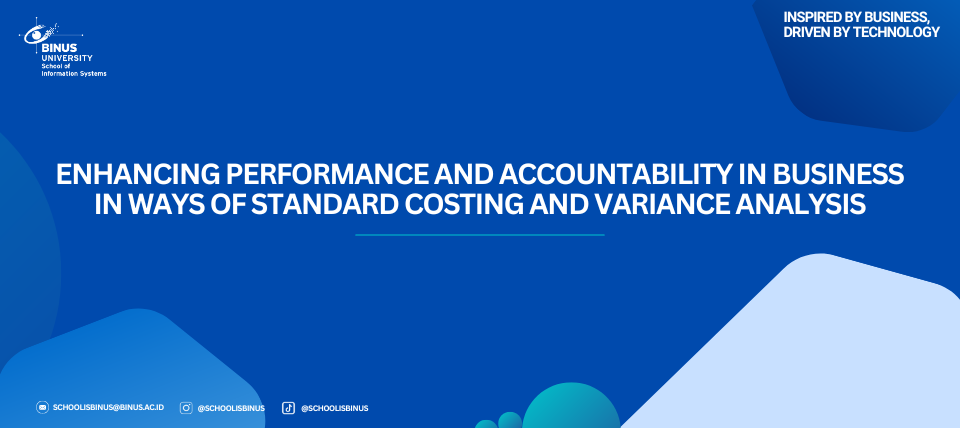Enhancing Performance and Accountability in Business in Ways of Standard Costing and Variance Analysis

Standard costing and variance analysis play pivotal roles in modern business management, offering a systematic approach to evaluate and control costs. By setting predetermined standards for various cost components, organizations can compare actual costs against these benchmarks, facilitating informed decision-making and performance improvement. This article explores the fundamental concepts of standard costing and variance analysis, highlighting their significance in achieving financial discipline and operational efficiency.
Standard costing involves the establishment of predetermined cost levels for each element of production, including direct materials, direct labor, and overhead. These predetermined costs serve as benchmarks against which actual costs are compared, enabling organizations to identify variances and understand the reasons behind deviations from the standards.
The direct materials standard outlines the expected cost of raw materials required for production. This includes the cost of purchasing, transporting, and storing materials. Variance analysis in this context helps assess whether the actual cost of materials aligns with the predetermined standards. Deviations may result from changes in material prices or usage.
Setting a standard for direct labor involves determining the expected time and cost required to complete specific tasks. Variances in direct labor costs are scrutinized to ascertain the efficiency of the workforce. Factors such as labor rates, skill levels, and production speed contribute to variations between actual and standard labor costs.
Overhead costs encompass various indirect costs associated with production, such as utilities, maintenance, and depreciation. Establishing standard overhead rates enables organizations to allocate these costs to products or services. Variances in overhead costs are crucial indicators of operational efficiency and cost control.
Variance analysis involves comparing actual costs with standard costs to identify and analyze discrepancies. Variances are classified into two main categories: favorable and unfavorable.
- Favorable Variances: Occur when actual costs are less than standard costs. While favorable variances may initially seem positive, organizations need to investigate the root causes to ensure they do not compromise product quality or employee morale.
- Unfavorable Variances: Arise when actual costs exceed standard costs. Unfavorable variances can signal inefficiencies, cost overruns, or unexpected challenges in the production process. Addressing these variances promptly is essential to maintain financial stability.
Using Standard Costing and Variance Analysis can prove to be useful for a company in various ways. Standard costing provides a benchmark for evaluating the performance of various departments and individuals within an organization. Variances highlight areas where improvements are needed, fostering accountability and efficiency. By comparing actual costs to predetermined standards, organizations can identify cost overruns and implement corrective measures promptly. This proactive approach to cost control enhances financial stability and profitability. Standard costing equips decision-makers with valuable insights into the cost structure of products and services. This information is crucial for pricing strategies, product mix decisions, and resource allocation. Variance analysis encourages a culture of continuous improvement by highlighting areas for enhancement. Through regular monitoring and analysis, organizations can adapt to changing market conditions and optimize their operational processes.
Standard costing and variance analysis are indispensable tools for modern businesses striving for financial discipline and operational excellence. By establishing predetermined standards and systematically analyzing variances, organizations can identify inefficiencies, control costs, and make informed decisions that contribute to long-term success. As businesses continue to navigate dynamic markets, the adoption of standard costing and variance analysis remains a cornerstone of effective financial management.

